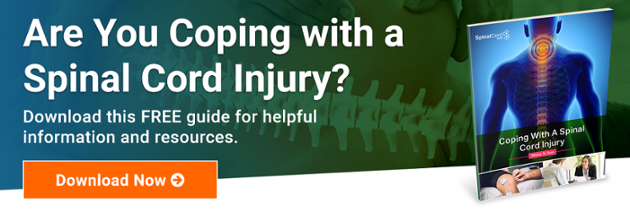3 of the Best Spinal Cord Injury Physiotherapy Treatments
Thanks to the incredible advances in medical technology and practices for spinal cord injuries (SCIs) over the past several decades, there are now more options than ever concerning spinal cord injury physiotherapy treatments, or what is frequently known as physical therapy.
A physiotherapist, or what is frequently known as a physical therapist or PT, is someone who specializes in human activity and movement, according to the World Confederation for Physical Therapy. They help patients such as spinal cord injury survivors improve their mobility, limit the risk of causing further damage to the spinal cord, and manage their pain so they can rejoin their communities.
Early intervention for treatment after a spinal cord injury is crucial to achieving your optimal recovery, as are continuing care and rehabilitation. However, the type of treatment that you should choose for your injuries will depend on your goals, your level of injury, and how high the damage is on the spinal cord. (For example, a cervical spinal cord injury is more severe and life-threatening than a lumbar spinal cord injury.) Be sure to speak with your doctor before starting a spinal cord injury physiotherapy treatment.
Spinal Cord Injury Physiotherapy Treatments
Conventional Physiotherapy (Physical Therapy)
This type of traditional therapy involves a lot of hands-on therapy, exercises, and stretching maneuvers to facilitate movement. The goal is to help a patient manage pain, improve circulation, prevent or reduce muscle atrophy, contractures, and weakness, and improve their overall health and wellness. This is done by helping to retrain your brain and body in an attempt to regain some or all lost mobility.
There are many different types of physiotherapy treatment techniques, including:
- Muscle stretching,
- Massage therapy,
- Joint manipulation,
- Acupuncture, and
- Neurodynamic exercises.
Spinal cord injury physiotherapy treatments are available at hospitals and rehabilitation centers throughout the United States. Furthermore, some treatments can be combined with PT to result in greater recovery results. For example, a study in the United Kingdom that used olfactory ensheathing cells (OECs) from nasal cavity skin cells to patch a man’s spinal cord injury that was sustained during a knife attack. When combined with hours of daily physiotherapy, the treatment led to increased muscle growth and helped him learn to walk again, as well as regain some bladder, bowel, and sexual functionality.
Activity-Based Therapy
Activity-based therapy (ABT), or what is also known as activity-based restorative therapy (ABRT), is a form of therapeutic activity that assists in the rehabilitation and recovery of individuals with neurological conditions, spinal cord injuries, and other traumatic injuries. It involves a lot of repetitive muscle movements to promote neuroplasticity, strength training, and gait training.
Unlike conventional physical therapy, ABT requires you to physically be in a standing position and not seated in your wheelchair or lying down. This method of treatment allows you to enjoy the benefits of standing and avoid the health issues that result from sitting for prolonged periods, including (but not limited to):
- Muscle spasms;
- Respiratory issues;
- Skin ulcers (pressure sores);
- Osteoporosis;
- Bowel function issues; and
- Urinary tract infections (UTIs).
ABT centers are located throughout the United States and provide a wide variety of different services.
Functional Electrical Stimulation
Functional electrical stimulation (FES) is a form of treatment that applies brief electrical pulses to paralyzed or weakened muscles via electrodes to help improve or restore their function. Although largely underutilized, this form of treatment is being used to by some providers to assist with exercises that help to boost heart and lung function, as well as improve bladder and bowel function, and increase mobility.
The Obvious and Hidden Costs of a Spinal Cord Injury
A traumatic spinal cord injury is an incredibly expensive condition that can require part-time or around-the-clock care. In addition to the assistance of a paid care provider, you’ll also have to pay a variety of costs relating to doctor visits, hospital stays, home modifications, fertility treatments, transportation or an accessible vehicle or adaptive controls, and spinal cord injury physiotherapy treatments. Some physical therapy providers charge $100 per hour, or even upwards of $50,000 for a year of physical therapy training. While some spinal cord injury survivors try to raise funds via crowdfunding, that’s not always successful and also isn’t a viable long-term solution to cover those costs.
This is where a spinal cord injury lawyer can help. If you were injured as the result of someone else’s negligence or actions, a caring and experienced SCI attorney can help you receive the compensation you deserve for your injuries. Swope, Rodante P.A. law firm, which specializes in spinal cord injury law, has helped clients receive hundreds of millions of dollars in compensation.
To learn more about how to live with a spinal cord injury, be sure to download our free guide by clicking on the image below.
Stay Updated on Advancements On Traumatic Brain &
Spinal Cord Injuries
About the Author







